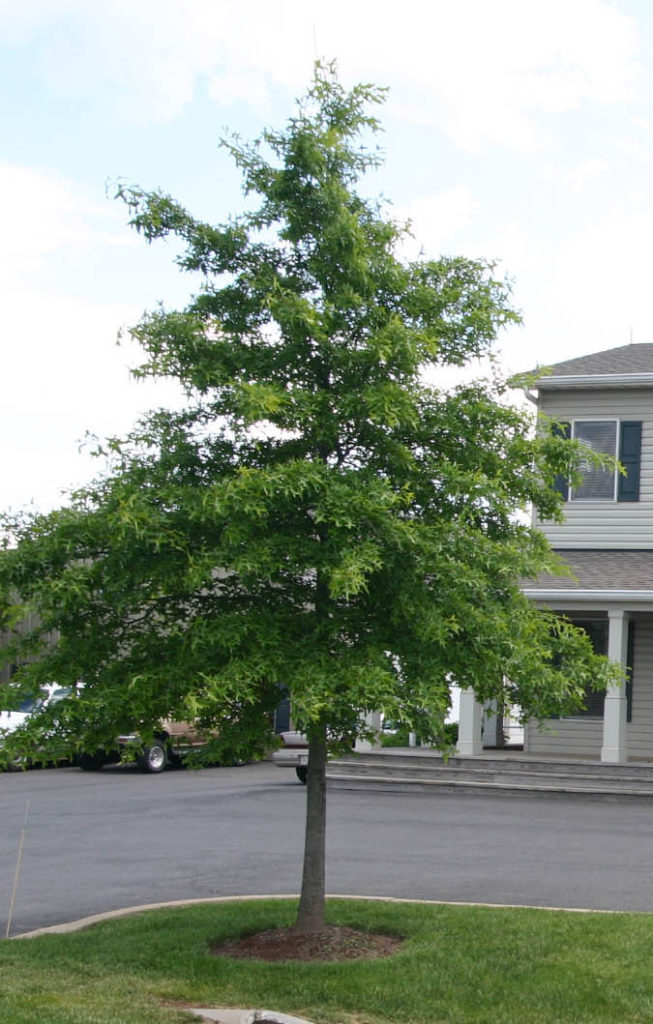Every time I plant a Pin Oak (Quercus palustris), I feel like the subject of a Buzzfeed article. “This designer planted a Pin Oak and you won’t believe what happened next.” What happened next is it did great! They’re just great trees that I think work well for several reasons. For one thing, Pin Oaks tolerate the water-holding clay we have here in Virginia. In fact, the species name “palustris” comes from the Latin word for marsh (palus), because they were observed in swampy lowland areas. Pin Oaks also tolerate heat, air pollution, and compacted soil.

Perhaps the most defining characteristic of a Pin Oak is its pyramidal shape. In silhouette, it looks like what you’d get if you asked a 6 year old to draw a Christmas tree. It really is a striking tree. It’s also a fast growing tree, easily growing 24 inches a year once established. Typical size for a Pin Oak is 60-70 feet tall x 25-30 ft wide.
Pin oaks are also easier to transplant than a lot of other trees, due to their shallow and fibrous root systems. Most good landscape designers are only going to suggest plants that do reliably well. We love Pin Oaks!
Fall color is attractive, with leaves turning scarlet and bronze. With fall comes acorns – after all, it’s an oak! When I think of acorns I think of squirrels (aka public enemy #1 as far as my dogs are concerned).

What I don’t think of are ducks. Ducks! Apparently Pin Oaks, growing in low swampy areas, are an important food source for ducks. They’re also loved by songbirds, wild turkeys, and deer, so if creating landscape for wildlife is important to you, Pin Oaks should be on your short list.

Leave a Reply